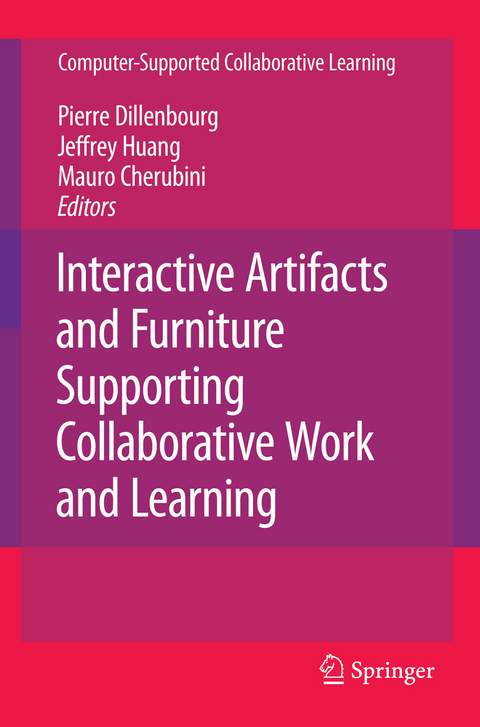
Interactive Artifacts and Furniture Supporting Collaborative Work and Learning
Seiten
2010
|
Softcover reprint of hardcover 1st ed. 2009
Springer-Verlag New York Inc.
978-1-4419-4581-5 (ISBN)
Springer-Verlag New York Inc.
978-1-4419-4581-5 (ISBN)
The field of Computer-Supported Collaborative Learning (CSCL) has traditionally focused on virtual learning environments and has somewhat neglected the physical environments in which students interact with each other and with their teachers. However, over the last years, scholars have devoted growing attention to the interplay between digital and physical environments. Interactive Artifacts and Furniture Supporting Collaborative Work and Learning reveals how these advances in computer science and human-computer interaction impact CSCL environments.
The underlying theme of the contributions is the social affordances of physical objects, i.e. the understanding of how technology-augmented physical objects support interactions among groups in a way more intuitive or natural than traditional computers. This collection of leading researchers investigates how artifacts may trigger rich interactions among groups, which is a central quest for researchers in CSCL.
Interactive Artifacts and Furniture Supporting Collaborative Work and Learning illustrates a turn in the field of CSCL and emphasizes an important message for a generation of CSCL designers and researchers.
The underlying theme of the contributions is the social affordances of physical objects, i.e. the understanding of how technology-augmented physical objects support interactions among groups in a way more intuitive or natural than traditional computers. This collection of leading researchers investigates how artifacts may trigger rich interactions among groups, which is a central quest for researchers in CSCL.
Interactive Artifacts and Furniture Supporting Collaborative Work and Learning illustrates a turn in the field of CSCL and emphasizes an important message for a generation of CSCL designers and researchers.
Why Would Furniture Be Relevant for Collaborative Learning?.- Design of Systems for Supporting Collaborative Learning Augmented with Physical Artefacts.- Do Fewer Laptops Make a Better Team?.- The Disappearing Computer: Consequences for Educational Technology.- Supporting Collaboration with Augmented Environments.- Rethinking the Podium.- Collaborative Tabletop Research and Evaluation.- Interpersonal Computers for Higher Education.- Exploratory Design, Augmented Furniture?.
| Reihe/Serie | Computer-Supported Collaborative Learning Series ; 10 |
|---|---|
| Zusatzinfo | XV, 174 p. |
| Verlagsort | New York, NY |
| Sprache | englisch |
| Maße | 155 x 235 mm |
| Themenwelt | Schulbuch / Wörterbuch ► Unterrichtsvorbereitung ► Unterrichts-Handreichungen |
| Geisteswissenschaften ► Psychologie ► Pädagogische Psychologie | |
| Informatik ► Software Entwicklung ► User Interfaces (HCI) | |
| Medizin / Pharmazie ► Medizinische Fachgebiete ► Psychiatrie / Psychotherapie | |
| Sozialwissenschaften ► Pädagogik ► Schulpädagogik / Grundschule | |
| ISBN-10 | 1-4419-4581-4 / 1441945814 |
| ISBN-13 | 978-1-4419-4581-5 / 9781441945815 |
| Zustand | Neuware |
| Informationen gemäß Produktsicherheitsverordnung (GPSR) | |
| Haben Sie eine Frage zum Produkt? |
Mehr entdecken
aus dem Bereich
aus dem Bereich
Wissensverarbeitung - Neuronale Netze
Buch | Hardcover (2023)
Carl Hanser (Verlag)
CHF 48,95
was alle wissen sollten, die Websites und Apps entwickeln
Buch | Hardcover (2024)
Rheinwerk (Verlag)
CHF 55,85
Mit traditionellen, aktuellen und zukünftigen Erfolgsfaktoren
Buch | Softcover (2018)
Franz Vahlen (Verlag)
CHF 41,70


